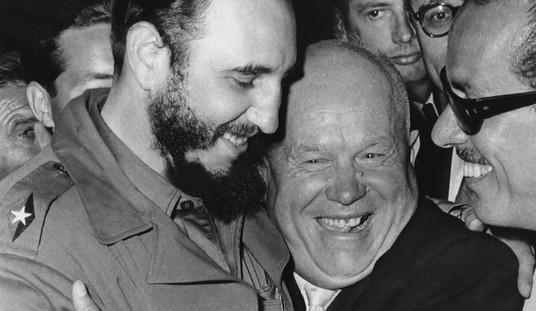Nate Silver, in his role as New York Times political poll analyst, has generated a graphical analysis of the various Republican contenders for the 2012 nomination. Clearly we’re still the better part of a year away from the primaries, but what else did you really have to do this weekend aside from arguing over election predictions? Let’s take a look at the graph and then spend a moment discussing how it was crafted.

We can skip over the relative merit of the chances assigned to each candidate (at least until the comments begin) since Nate took each person’s prospects for winning from their Intrade betting profile. Even the author doesn’t agree with all of them, but simply uses those values as a baseline. I’ll let Nate explain that part himself.
There are two more kinds of information embedded in the chart. First, the area of each candidate’s circle is proportional to their perceived likelihood of winning the nomination, according to the Intrade betting market. Mitt Romney’s circle is drawn many times the size of the one for the relatively obscure talk-radio host Herman Cain because Intrade rates Mr. Romney many times as likely to be nominated.
(I should note that there are several cases in which I am in considerable disagreement with the bettors at Intrade about the viability of each candidate. But using their figures as the basis for drawing the circles at least lends some objectivity to the assessment.)
If we ignore the size of the relative circles – which nobody is going to agree with anyway – the more interesting aspect of this chart is the placement. The further “north” a candidate falls, the more they are considered to be a Washington “insider.” A southerly position indicates a Beltway outsider. The further left they fall, the more “moderate” they are considered, (*cough* RINO) while a position more to the right indicates a perceived traditional conservative ideology.
Recent conventional wisdom would say that Washington insiders are distinctly out of favor, and traditional campaign strategy for the GOP tends to indicate that it’s better to be considered more conservative in the primary race. By that logic, placement in the upper left quadrant – where we find Giuliani, Huntsman and Pataki – would have the absolute worst chance. Landing in the lower right quadrant, as did Palin, Bachmann and Cain, would lend one the best chance.
If we then combine placement with the size of the bubble, indicating odds for victory, we find that Sarah Palin is clearly the next Republican presidential nominee and George Pataki should begin knitting sweaters for the residents of Hell if he plans on winning. But the alternate school of thought is that you need to be able to cast the broadest net for the most supporters, so getting closer to the center of each axis offers the best path to victory. By that rationale, Tim Pawlenty is clearly the next President of the United States and we may as well just skip the whole election.
So, have at it. Whose placement or relative odds is correct on this chart and which ones are totally outside of reality? Do any of the positioning choices surprise you?









Join the conversation as a VIP Member